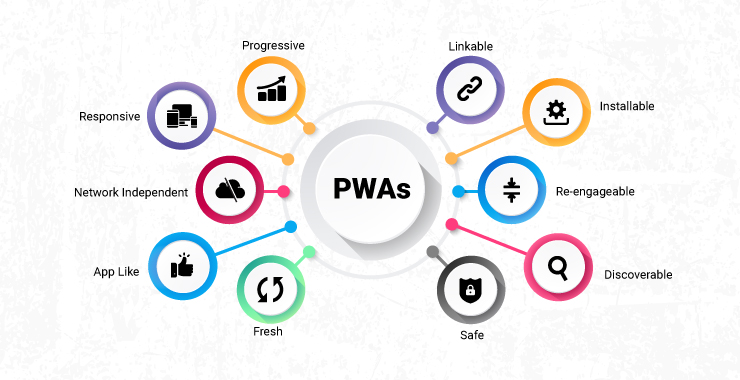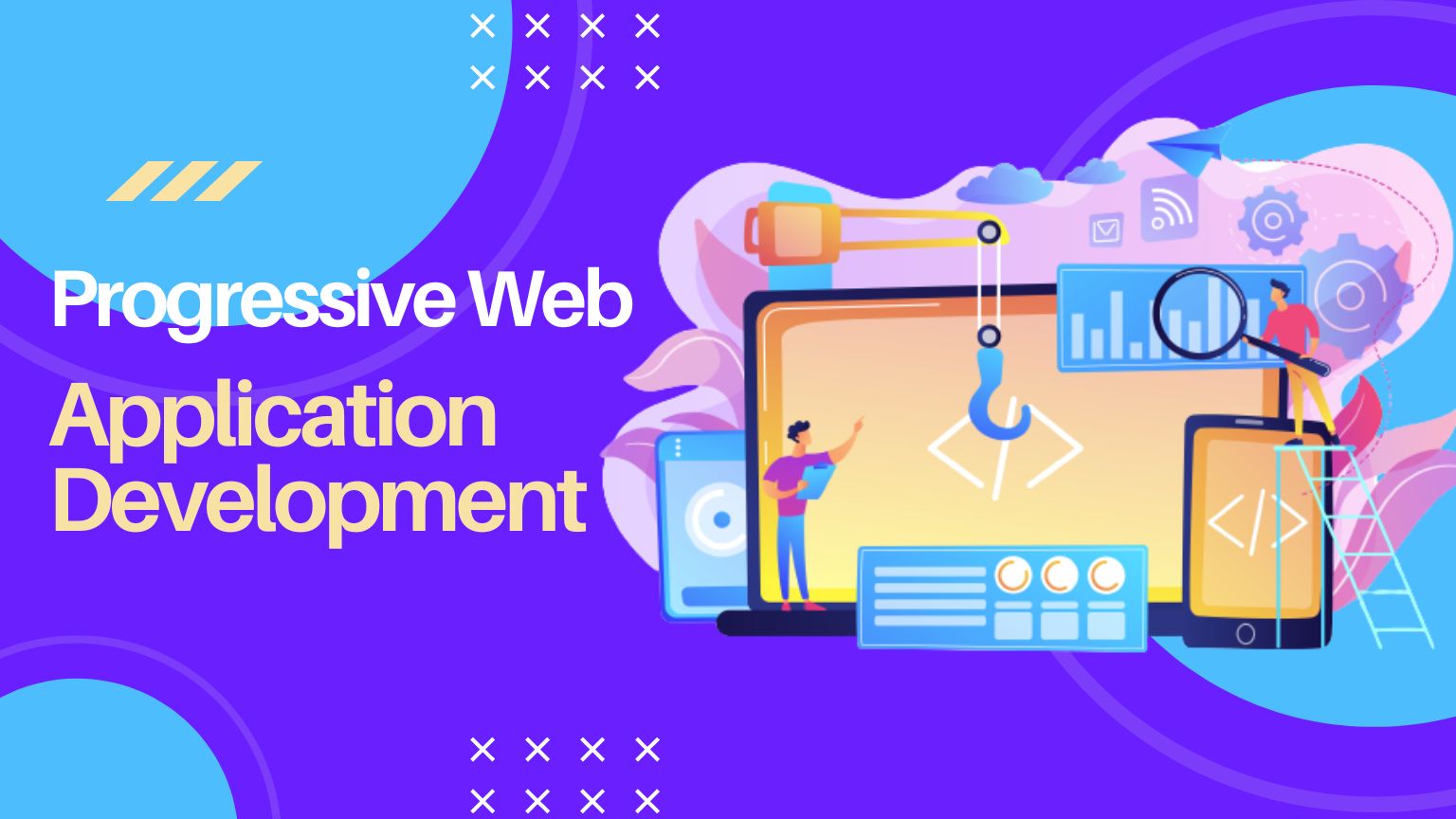In today’s digital age, businesses are constantly looking for ways to enhance their online presence and improve user experiences. With the rapid growth of mobile devices and the increasing demand for mobile-friendly websites, Progressive Web Applications (PWAs) have emerged as a game-changer in web application development. In this article, we will explore what PWAs are, their benefits, and why your business needs to embrace this innovative technology.
Introduction
The online landscape is evolving, and traditional websites alone may not suffice to meet the demands of modern users. PWAs bridge the gap between websites and native mobile applications, offering a seamless and engaging experience for users across various devices. Let’s delve deeper into the concept of PWAs and their advantages.
What is a Progressive Web Application (PWA)?
A Progressive Web Application is a web-based application that utilizes modern web technologies to provide a native app-like experience. PWAs leverage the capabilities of service workers, which enable offline access, background synchronization, and push notifications. With the help of an app manifest, PWAs can be installed on users’ devices and function independently of an internet connection.

Benefits of Progressive Web Applications
Improved user experience
PWAs offer a fast and immersive experience to users, similar to that of native mobile apps. With features like smooth navigation, instant loading, and full-screen mode, users can enjoy a seamless browsing experience without the need to install an app.
Increased website performance
Traditional websites often suffer from slow loading times, especially on mobile devices. PWAs, on the other hand, are designed to be highly optimized and deliver exceptional performance. By leveraging techniques such as caching and preloading, PWAs load quickly and respond instantly to user interactions.
Offline capabilities
One of the standout features of PWAs is their ability to work offline. By caching essential assets and data, PWAs can continue functioning even when there is no internet connectivity. This capability is particularly valuable for users in areas with poor network coverage or during temporary network outages.
Push notifications
PWAs can send push notifications to users, just like native mobile apps. This feature allows businesses to engage with their users, deliver personalized content, and re-engage users who might have abandoned their sessions.
How PWAs can benefit your business
Cost-effectiveness
Developing separate native apps for different platforms can be a costly endeavor. PWAs offer a cost-effective solution by utilizing a single codebase that works across multiple devices and platforms. This approach reduces development and maintenance costs while ensuring a consistent user experience.
Increased user engagement and conversion rates
PWAs can significantly boost user engagement and conversion rates. With features like push notifications and offline capabilities, businesses can keep users engaged and encourage them to revisit their applications. Studies have shown that PWAs often lead to higher session durations, increased page views, and improved conversion rates.
Wider audience reach
Unlike native apps that require users to download and install them, PWAs are accessible directly through a web browser. This eliminates the barrier of app store downloads and allows businesses to reach a broader audience, including users who may have limited storage space or are reluctant to install new apps.
Simplified maintenance and updates
Maintaining and updating native apps can be complex and time-consuming, requiring separate releases for different platforms. With PWAs, updates, and bug fixes can be deployed seamlessly without the need for user interaction. This streamlined process ensures that users always have access to the latest version of the application.
Examples of successful PWAs
Several renowned companies have embraced PWAs and achieved remarkable success. Let’s take a look at some notable examples:
Twitter Lite
Twitter Lite, a Progressive Web Application developed by Twitter, offers a lightweight and fast alternative to its native app. Twitter Lite loads quickly even on slow networks, provides offline access to previously visited content and offers push notifications to keep users engaged.
Starbucks
Starbucks introduced a PWA to enhance its mobile ordering experience. The Starbucks PWA allows users to browse the menu, customize their orders, and pay directly from their devices. The PWA offers a smooth and responsive interface, even on unreliable network connections.
Flipboard, a popular news aggregation platform, transformed its website into a PWA. The Flipboard PWA offers a magazine-style layout, offline access to previously loaded articles, and personalized recommendations. The PWA has significantly improved user engagement and loading times, resulting in a better user experience.
Implementing a Progressive Web Application
To develop a successful PWA, several key factors need to be considered. Here are some essential components of PWA development:

Responsive design and mobile optimization
PWAs should be designed with a responsive approach to ensure compatibility across devices of different sizes and resolutions. Optimizing the user interface and layout for mobile devices is crucial for delivering an optimal user experience.
Service workers
Service workers are the backbone of PWAs, enabling offline functionality, background synchronization, and push notifications. Implementing service workers requires careful planning and consideration of caching strategies, data synchronization, and notification management.
App manifest
The app manifest is a JSON file that provides essential information about the PWA, such as its name, icons, and display preferences. It allows users to install the PWA on their devices and provides a native-like experience by integrating with the operating system.
SEO advantages of PWAs
In addition to their user-centric benefits, PWAs offer significant advantages from an SEO perspective. Here are some key SEO benefits of adopting PWAs:

Faster page loading times
Page loading speed is a critical ranking factor for search engines. PWAs, with their optimized performance and caching mechanisms, load faster than traditional websites, resulting in improved search rankings and user satisfaction.
Improved mobile-friendliness
Mobile-friendliness is another crucial aspect of SEO. As PWAs are designed to be fully responsive and mobile-optimized, they provide an excellent user experience across a wide range of devices. This leads to better search visibility and rankings on mobile search results.
Increased visibility and search rankings
By providing a seamless user experience, PWAs can improve user engagement metrics, such as time on site, bounce rate, and pages per session. These positive engagement signals are recognized by search engines, leading to improved visibility and higher search rankings.
Common Misconceptions about PWAs
Despite their numerous benefits, PWAs are sometimes subject to misconceptions. Let’s address some common misconceptions and clarify the facts:
Native app vs. PWA
While PWAs offer app-like features and capabilities, they are not intended to replace native mobile applications entirely. PWAs provide a complementary approach, bridging the gap between websites and native apps, offering a broader reach and improved user experiences.
Compatibility concerns
PWAs are built using web technologies that are widely supported across modern browsers. They can run on various operating systems and devices, ensuring compatibility and accessibility for a vast majority of users.
Limited access to device features
Contrary to popular belief, PWAs can access various device features, including cameras, geolocation, and device sensors. With the help of progressive enhancement techniques, PWAs can provide a rich and interactive experience while respecting users’ privacy and security.
Conclusion
Progressive Web Applications have revolutionized web application development, offering a compelling alternative to traditional websites and native apps. With their enhanced user experience, offline capabilities, and cost-effectiveness, PWAs are a valuable asset for businesses looking to optimize their online presence. By embracing PWAs, businesses can expand their reach, increase user engagement, and stay ahead in today’s competitive digital landscape.
FAQs
Q. Are PWAs compatible with all devices and browsers?
PWAs are built using web technologies that are widely supported across modern browsers. They can run on various operating systems and devices, ensuring compatibility for a vast majority of users.
Q. How do PWAs improve search engine rankings?
PWAs provide faster page loading times, improved mobile friendliness, and enhanced user engagement. These positive factors contribute to better search visibility and higher search rankings.
Q. Can PWAs access device features like camera and geolocation?
Yes, PWAs can access various device features, including cameras, geolocation, and device sensors. With progressive enhancement techniques, PWAs can provide a rich and interactive experience while respecting users’ privacy and security.
Q. Are PWAs cost-effective compared to native apps?
Yes, PWAs offer a cost-effective solution as they utilize a single codebase that works across multiple devices and platforms. This approach reduces development and maintenance costs while ensuring a consistent user experience.
Q. Can PWAs work offline?
Yes, one of the key advantages of PWAs is their ability to function offline. By caching essential assets and data, PWAs can continue providing core functionality even when there is no internet connectivity.
